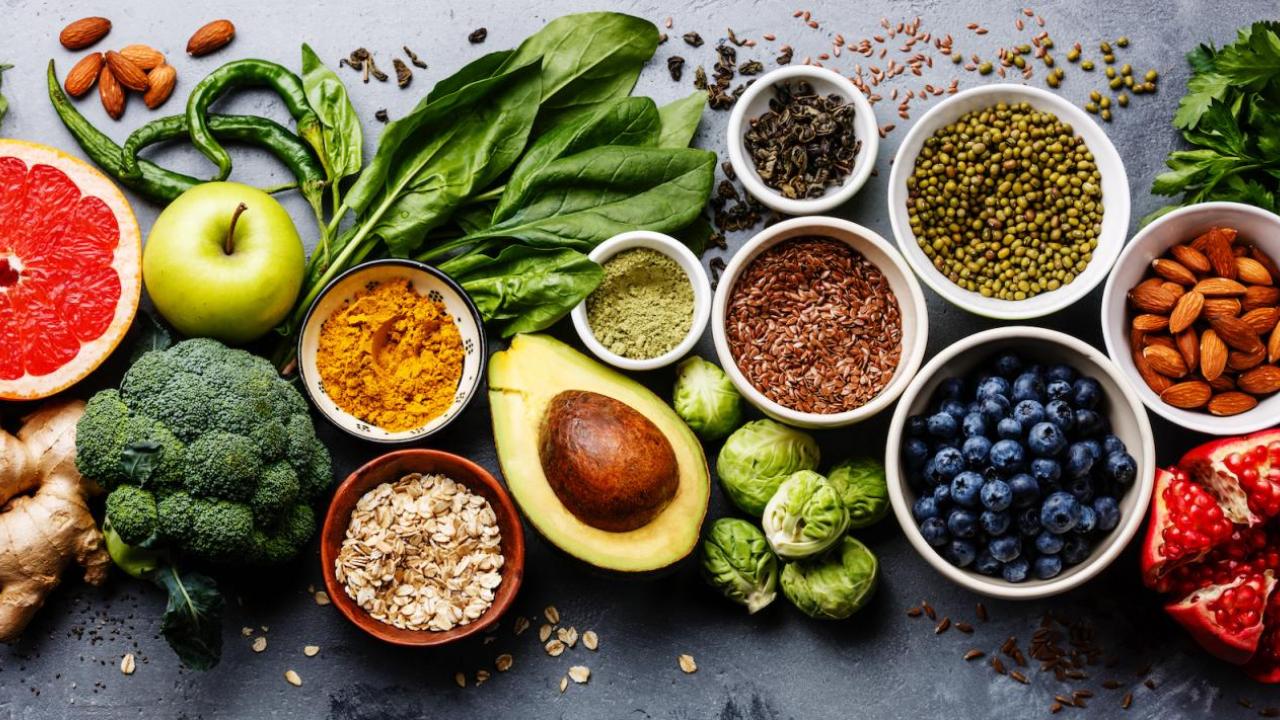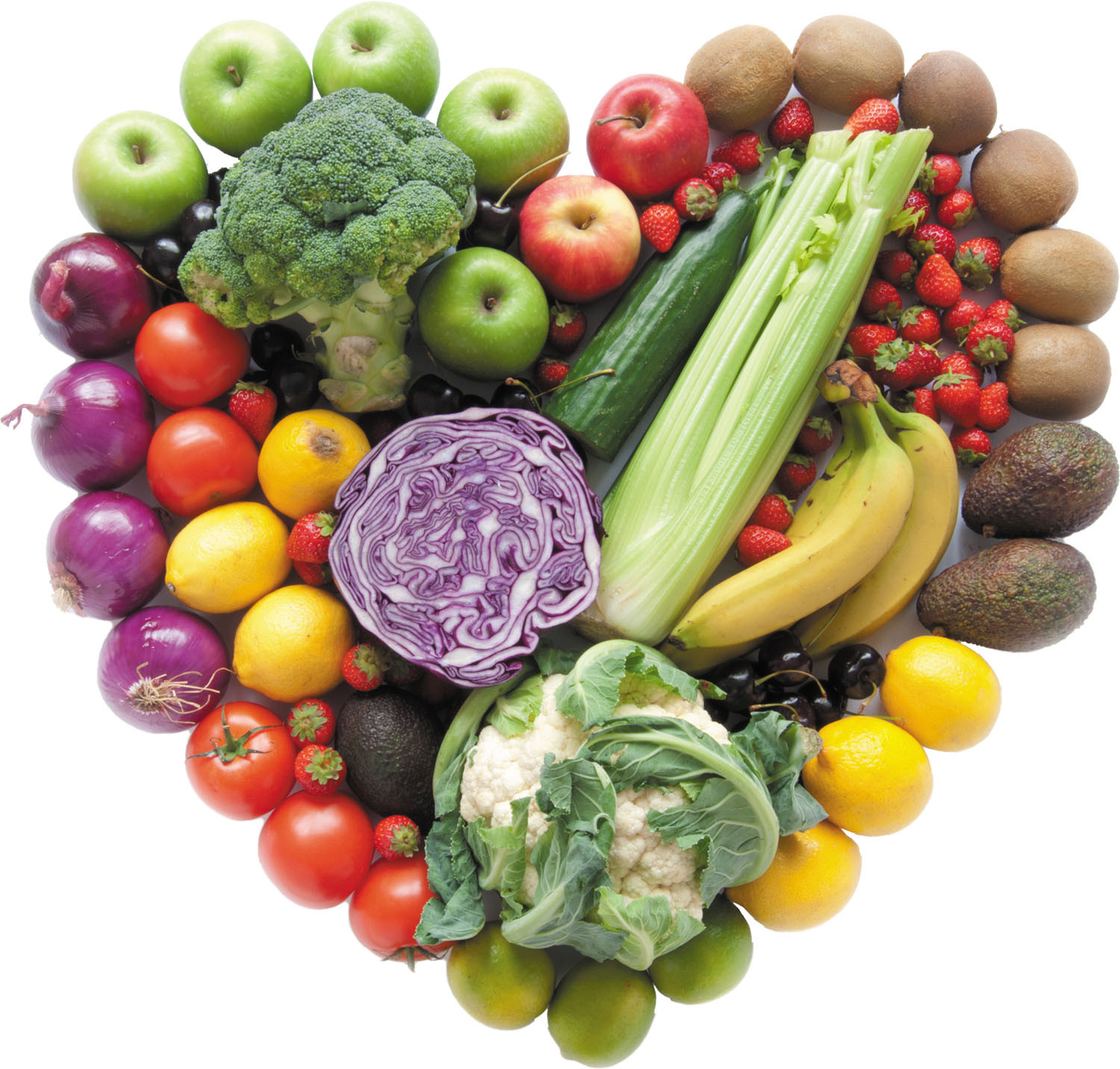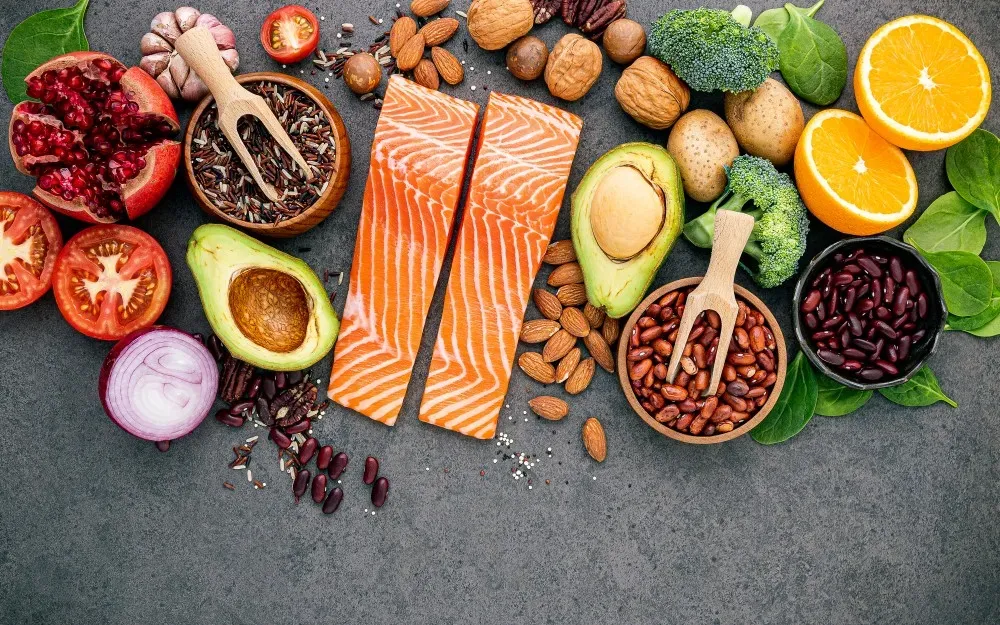A healthy diet isn’t just about eating more vegetables or skipping dessert. It’s a complete shift in how your body burns fat, stores energy, and supports long-term transformation. In fact, the term “healthy diet” has become so watered down that most people overlook its full potential when trying to slim down.
But here’s what the science says: a well-balanced, nutrient-dense diet is one of the most effective tools for natural weight loss. A 2024 clinical trial published in The New England Journal of Medicine found that participants following a Mediterranean-style healthy diet lost an average of 11 pounds in 12 weeks—without calorie counting, pills, or intense workouts.
Still, many people struggle to implement this kind of diet in real life. Is it lack of time? Too much conflicting advice online? Or just uncertainty about where to begin?
In this comprehensive guide, you’ll learn how a healthy diet works behind the scenes to boost your metabolism, regulate hormones, and promote sustainable weight reduction. You’ll also explore real-life tips, delicious meal ideas, and surprising strategies like the pink salt trick—a natural method some experts say may improve hydration and fat metabolism.
Whether you’re looking to shed belly fat, kickstart a 7-day healthy diet plan, or simply eat better every day, this blog post delivers clear, compassionate guidance grounded in the latest research. Ready for a transformation that doesn’t rely on willpower alone? Let’s dive in.

The Science Behind a Healthy Diet: More Than Just Calories
Many people still think weight loss is just about “eating fewer calories than you burn.” While that’s technically true, it’s also wildly oversimplified. A healthy diet isn’t just a matter of math—it’s a matter of biology.
According to a 2025 report from the National Institutes of Health (NIH), the quality of the food you eat plays a major role in how your body processes calories. Nutrient-dense foods like vegetables, lean proteins, whole grains, and healthy fats influence insulin response, gut health, and even fat oxidation (how your body burns fat).
For instance, studies show that ultra-processed foods may impair your metabolism, cause inflammation, and lead to fat accumulation—especially around the abdomen. Meanwhile, diets rich in fiber and phytonutrients can boost metabolism, curb cravings, and improve insulin sensitivity, leading to sustained fat loss.
Moreover, protein intake plays a critical role in maintaining lean muscle during weight loss, which in turn helps burn more calories at rest. A healthy diet also supports your microbiome, the community of gut bacteria that influences appetite and mood.
The bottom line? A low-calorie diet that’s also low in nutrients will slow your metabolism and sabotage weight loss. A healthy diet meal plan, on the other hand, works with your body’s natural rhythms to help you drop weight without constant hunger.
How a Healthy Diet Helps You Drop Weight Naturally
When your body is nourished with whole, unprocessed foods, it starts working for you—not against you. Here’s how a healthy diet supports natural weight reduction:
-
Hormonal Balance: Eating balanced meals keeps insulin and cortisol levels in check. This prevents fat storage—especially around the belly.
-
Appetite Regulation: Fiber- and protein-rich meals promote satiety and help reduce mindless snacking.
-
Improved Fat Metabolism: Omega-3 fatty acids and spices like cayenne pepper can increase fat oxidation and thermogenesis.
-
Blood Sugar Stability: Whole foods prevent energy crashes that lead to cravings and overeating.
-
Reduced Inflammation: Antioxidant-rich fruits and vegetables reduce inflammation linked to obesity and metabolic dysfunction.
A landmark 2024 meta-analysis in The Lancet Diabetes & Endocrinology showed that individuals who followed a whole-food, plant-forward diet lost more weight and kept it off longer compared to those following high-protein or low-carb diets.
Tip: Want to slim down even more efficiently? Try the pink salt trick—adding a pinch of high-quality Himalayan salt to lemon water in the morning. Some emerging research suggests this may enhance electrolyte balance and curb sugar cravings, especially in dehydrated individuals.
What Does a Healthy Diet Look Like in Real Life?
You don’t need to live on green smoothies and salad. A sustainable healthy diet is diverse, colorful, and deeply satisfying. It includes:
-
Vegetables (raw, roasted, steamed): Cruciferous veggies like broccoli and kale are fat-burning powerhouses.
-
Whole Grains: Think quinoa, oats, brown rice—high in fiber and slow-digesting carbs.
-
Healthy Proteins: Wild salmon, lentils, tofu, and organic eggs help preserve muscle while you lose weight.
-
Fats That Heal: Avocados, olive oil, nuts, and seeds support hormone production and satiety.
-
Fruits in Moderation: Berries are packed with antioxidants and have low glycemic impact.
The key is variety. According to the American Journal of Clinical Nutrition (2025), people who eat 30 or more different plant foods per week have better gut health, lower inflammation, and easier weight control.
For breakfast, try overnight oats with chia seeds and blueberries. Lunch might be a quinoa bowl with roasted veggies and tahini dressing. Dinner? Baked salmon with sautéed spinach and sweet potato.
Need inspiration? Check out our healthy diet recipes section later in this post for a 7-day plan to kickstart your transformation.
The Real Benefits of a Healthy Diet Go Beyond the Scale
When most people think of a healthy diet, the first thing that comes to mind is weight loss. While it’s true that a healthy diet is one of the most effective tools to lose weight or maintain a healthy weight, its benefits go far deeper than the number on the scale.
A well-balanced, nutrient-rich diet supports nearly every system in your body. According to the NIH and Mayo Clinic, diets high in fruits, vegetables, whole grains, lean proteins, and healthy fats can significantly reduce the risk of chronic diseases like type 2 diabetes, cardiovascular disease, and certain cancers. They also improve cognitive function, enhance mood stability, and even reduce symptoms of anxiety and depression.
One particularly important function of a healthy diet is inflammation regulation. Processed foods, excess sugars, and trans fats contribute to systemic inflammation, which is now known to be a root cause of many age-related illnesses. A healthy diet naturally combats this by supplying antioxidants, fiber, and anti-inflammatory nutrients.
Moreover, when your digestive system is well-nourished and your metabolism functions smoothly, you sleep better, your skin glows, and your energy stays consistent throughout the day. These are transformations that no scale can capture.
So yes, weight reduction is often the initial motivation—but the total-body transformation that follows is why people who adopt a healthy eating lifestyle tend to stick with it.

How to Start a Healthy Diet Without Feeling Overwhelmed
Starting a healthy diet doesn’t mean you have to throw out everything in your fridge or go on a juice cleanse. The key is to make sustainable, small changes that build momentum over time.
First, identify your motivation. Whether it’s to drop weight, manage a health condition, or simply feel better in your skin, having a clear “why” can keep you focused. Then, assess your current eating patterns. Are you skipping breakfast? Are processed snacks your go-to between meetings? Awareness is the first step toward transformation.
Next, start with achievable swaps:
Simple changes to get started:
-
Replace sugar-laden breakfast cereals with oatmeal topped with berries and seeds.
-
Swap soda for sparkling water with lemon or a splash of juice.
-
Prepare healthy diet recipes in advance so you’re not caught reaching for takeout.
-
Use the “pink salt trick” — sprinkling a small amount of pink Himalayan salt on steamed veggies or lean proteins can enhance flavor and encourage you to eat more whole foods.
Don’t try to be perfect. Instead, aim for the 80/20 rule: eat nutrient-dense foods 80% of the time, and allow flexibility for the rest.
The Science of Fat Metabolism and Healthy Eating
Understanding fat metabolism can empower you to make smarter food choices. Fat metabolism refers to how your body breaks down fats to produce energy. A sluggish metabolism often results from poor dietary habits, lack of exercise, and poor sleep.
A healthy diet rich in omega-3 fatty acids (from foods like salmon, flaxseeds, and walnuts), fiber (from leafy greens and legumes), and lean proteins can enhance the body’s ability to mobilize fat stores. These foods help regulate hormones like insulin and leptin, which play a crucial role in hunger, energy storage, and fat utilization.
Some foods even have a thermogenic effect — meaning your body burns more calories digesting them. High-protein meals and spicy foods are known to boost metabolism naturally. Staying hydrated, especially by drinking cold water, also helps increase your basal metabolic rate (BMR).
Combining a low-calorie diet with nutrient density is essential. You don’t want to eat less — you want to eat smarter.
The 7-Day Healthy Diet Plan: A Simple Blueprint
Creating a weekly structure can eliminate decision fatigue and improve adherence. Here’s a simple 7-day healthy diet plan that includes balance, variety, and taste.
Key guidelines:
-
Each meal includes lean protein, complex carbs, healthy fats, and vegetables.
-
Snacks are optional but should be whole-food-based (like fruit + nuts).
-
Water, green tea, or black coffee are preferred drinks.
Sample Day:
Breakfast: Greek yogurt with chia seeds, berries, and a drizzle of honey Lunch: Quinoa salad with chickpeas, cucumber, tomato, lemon-olive oil dressing Dinner: Baked salmon, steamed broccoli with the pink salt trick, and roasted sweet potato Snack: Apple slices + almond butter
This format can be mixed and matched to suit your preferences while reinforcing your healthy diet goals.
Healthy Diet Recipes That Actually Taste Good
Let’s be honest: No one wants to eat bland grilled chicken and lettuce every day. The secret to a sustainable healthy diet is enjoying what you eat. Here are some nutrient-rich, flavorful recipes that help you slim down without sacrificing pleasure.
-
Spicy Chickpea Tacos: Roasted chickpeas with cumin and paprika, stuffed into lettuce wraps or whole-grain tortillas.
-
Avocado Egg Toast: Mashed avocado on whole grain toast, topped with a soft-boiled egg and chili flakes.
-
Zucchini Noodles with Pesto: Swap out pasta for spiralized zucchini and mix with homemade basil pesto.
-
Pink Salt Baked Veggies: Roasted carrots, beets, and cauliflower tossed in olive oil, thyme, and a sprinkle of pink salt to enhance mineral content.
These recipes balance flavor, nutrition, and ease — so you never feel deprived.
Common Healthy Diet Mistakes (and How to Avoid Them)
Even with the best intentions, it’s easy to fall into common diet traps:
Watch out for these:
-
Eliminating entire food groups: This can lead to nutrient deficiencies. Unless advised by a doctor, balance is better.
-
Overdoing healthy snacks: Nuts, granola, and protein bars are healthy in moderation but calorie-dense.
-
Relying on diet labels: “Low-fat” or “gluten-free” doesn’t automatically mean it’s good for you.
-
Ignoring portion sizes: Even healthy foods can contribute to weight gain if portions are oversized.
Tracking your meals for a few days can build awareness and prevent these pitfalls.
How to Stick to a Healthy Diet for the Long Term
Sustainability is the most important part of a healthy eating plan. Extreme diets may offer quick results, but they rarely lead to lasting change.
Tips for staying consistent:
-
Make it social: Share meals with friends or cook with family to build positive associations.
-
Meal prep: Having healthy diet meals ready reduces the chance of impulsive eating.
-
Track non-scale victories: Celebrate clearer skin, more energy, or better mood.
-
Avoid all-or-nothing thinking: One indulgent meal doesn’t undo your progress.
The healthiest people aren’t perfect eaters — they’re consistent, balanced, and forgiving.

Conclusion
A healthy diet isn’t a temporary fix — it’s a long-term strategy for a better life. From reducing belly fat and supporting fat metabolism to improving your mood and energy levels, the benefits touch every corner of your well-being.
The key lies in personalization and patience. There’s no one-size-fits-all path, but every small step — whether it’s choosing whole grains over refined ones or discovering a new healthy diet recipe you love — brings you closer to lasting transformation.
Remember, health is a journey. And with the right information, mindset, and support, it’s one that can be both empowering and delicious.
FAQ
Can a healthy diet help reduce belly fat specifically? Yes. Diets rich in fiber and protein reduce visceral fat, especially when combined with physical activity.
What is the “pink salt trick” and does it really work? It refers to using pink Himalayan salt to enhance vegetable and lean protein flavor, making healthy eating more appealing.
Is it necessary to follow a 7-day healthy diet plan strictly? No. Use it as a flexible guide. The key is consistency, not perfection.
How long does it take to see weight loss from a healthy diet? Results vary, but noticeable changes often occur within 3–6 weeks with steady effort.
Can I lose weight without counting calories? Yes. Focus on whole foods and portion awareness. Quality often matters more than quantity.
What’s one food I should eat every day? Leafy greens like spinach or kale. They’re nutrient-dense, low-calorie, and support fat metabolism.